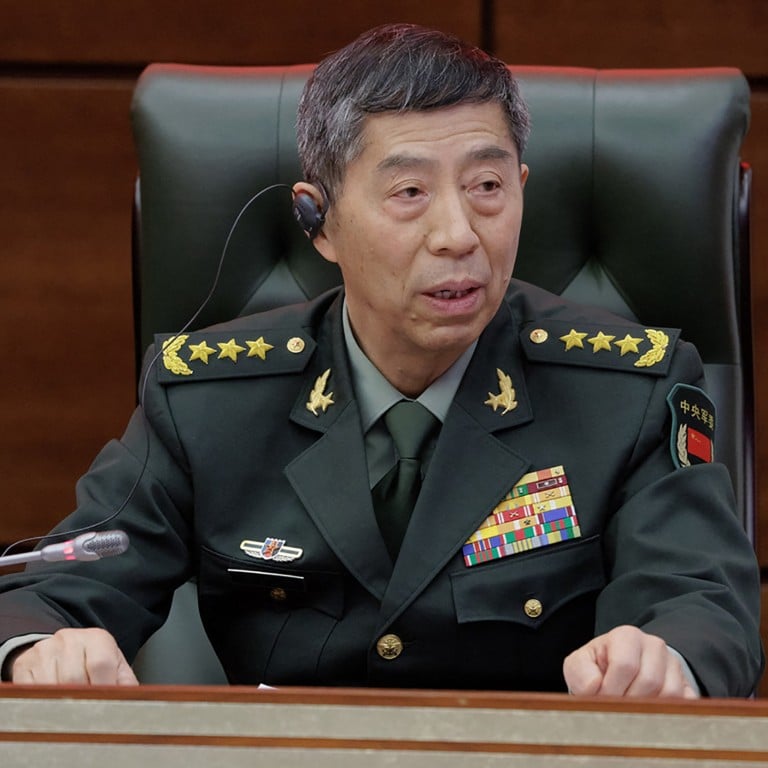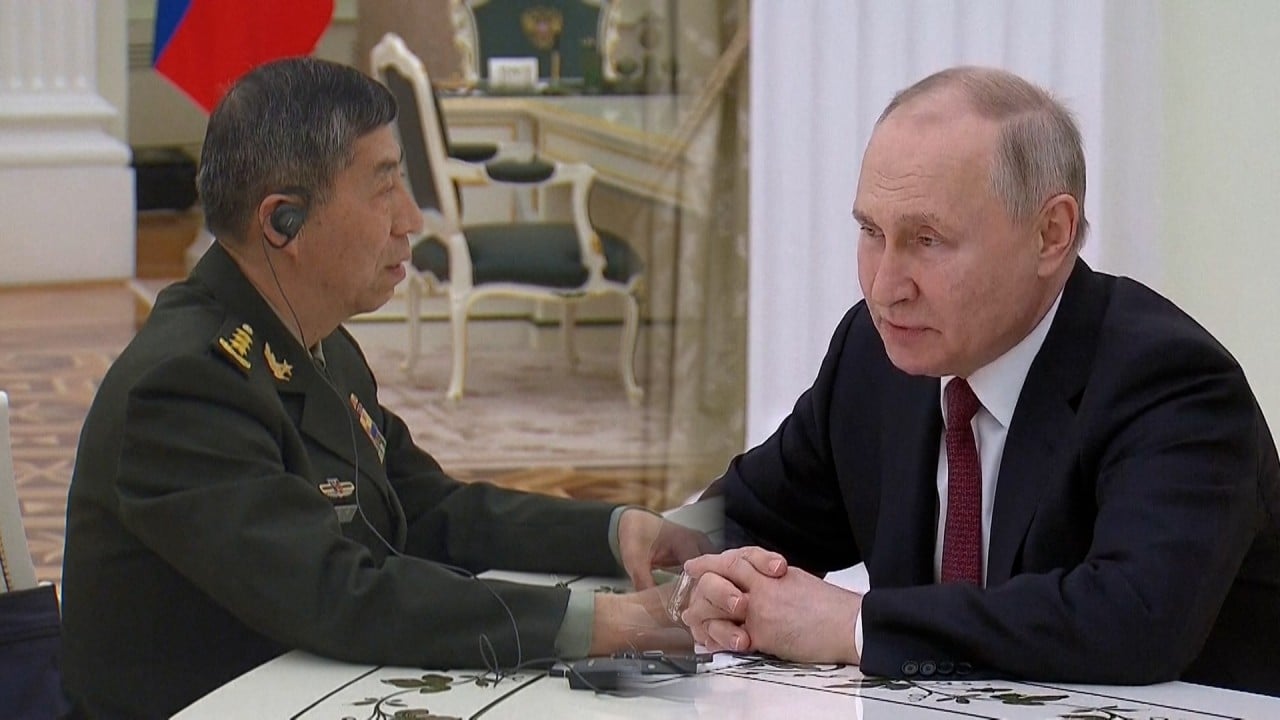
US, Australian military staff tour China’s Beijing garrison despite freeze on top brass talks
- The embassy attaches are among dozens to take part in the first visit since the pandemic
- Event signals willingness in China for exchanges with Western forces, observers say
Military attaches from the United States and Australia were among the dozens invited to tour the People’s Liberation Army’s garrison in Beijing on Thursday, the first event of its kind since the pandemic.
Observers said the invitation from the PLA Ground Force indicated China’s willingness to have regular military exchanges with Western forces.
More than 50 military attaches and officers from 43 embassies took part in the tour, the ground force said on its WeChat social media account on Sunday.
Troops put on demonstrations of boxing, firearms drills and antiterror training, and showed the visitors around the officers’ dormitory.
Chinese defence chief will speak at Shangri-La Dialogue, ministry says
The ground force said the tour was the first it had organised for foreign counterparts since the Covid-19 pandemic, and signalled China’s efforts to promote mutual understanding, deepen mutual trust and forge friendship with other countries under its goal of “peaceful development”.
Zhou Chenming, a researcher with the Beijing-based Yuan Wang military science and technology think tank, said the invitation was a message to Washington.
“Beijing wants to use the resumption of military exchanges to tell Washington: don’t mix up military-to-military exchanges with politics, and don’t use ‘sanctions’ to create problems for your rival,” Zhou said.
The PLA has maintained mid-level engagement and communication with its US counterpart, but the sanctions on Li have blocked high-level communications between the two militaries since Li was promoted to defence minister in March.
Song Zhongping, a former PLA instructor, said the garrison tour did not amount to “bilateral face-to-face engagement” – the kind of contact that promoted trust.
“In military diplomacy areas, bilateral in-person engagement shows good levels of trust on both sides, which is more valuable and effective than the kind of routine and multiple exchanges [on the garrison tour],” he said.
Ni Lexiong, a professor in the department of political science at Shanghai University of Political Science and Law, agreed the tour was routine but the inclusion of the US and other Western countries indicated “the PLA retains an open attitude to future cooperation with the US and Australia”.
The PLA statement highlighted the host division’s history as an elite fighting force and its involvement in the anti-Japanese and Korean wars.


